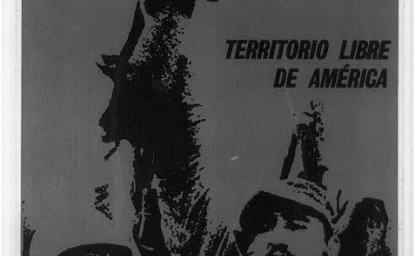Iranian Azerbaijan in the Former Soviet Archives
Jamil Hasanli outlines the best routes for conducting research on and in Azerbaijan.

A blog of the History and Public Policy Program
Jamil Hasanli outlines the best routes for conducting research on and in Azerbaijan.

Throughout the 1940s, Iranian Azerbaijan occupied an important place in the Soviet Union’s foreign policy. The region was the site of perhaps the Cold War’s first crisis, sparked by the Soviet Union's refusal to return control of Iranian territory at the end of World War II and the creation of the shortlived People's Republic of Azerbaijan. Stalin eventually bowed to Western pressure and withdrew Soviet troops in late 1946.
The former Soviet archives contain a rich base of documents about the dramatic and controversial events of those years. These documents can be divided into three categories based on their nature and content: those that relate to the Communist Party of the USSR, documents from the Soviet Foreign Ministry, and, lastly, documents relating to the Soviet military.
The first category of Azeri documents come from the Communist Party of the Soviet Union (CPSU) and are primarily kept in the Russian Social and Political History State Archive (RGASPI), in Moscow. These include decisions of the Political Bureau in connection with Iran and South Azerbaijan, the instructions for the Foreign Ministry and ambassador in Tehran and Soviet diplomatic institution in Tabriz, correspondence of Foreign Policy Department of the Communist Party, and correspondence with the People's Party of Iran (Tudeh), such as reports and requests from members of Tudeh, sent to Moscow.
There are also, however, a large number of government documents that relate to Azerbaijan maintained at the State Archive of the Russian Federation. This applies, first and foremost, to government documents: the Council of People's Commissars (Council of Ministers of the USSR), materials of the State Defense Committee of the USSR, documents of individual Ministry and Agency. Unfortunately, many of these documents are still classified. This applies particularly to the materials of the Commissariat (Ministry) of State Security, the Commissariat of Internal Affairs, the special folder for the Commissariat of Defense, and other Soviet special agencies. At the same time, there are still many documents on the economic and cultural character of Soviet policy in Iranian Azerbaijan.
For example, the State Archives has a fond with a huge number of documents titled: "Xinjiang, Iranian Azerbaijan, Turkey 1941-1953." The list of documents alone is 70 pages. These documents show the evolution of Soviet policy along the southern border of the USSR during World War II and the early Cold War period, and answers the basic question: where and when the Cold War began. It should also be noted that all the materials of the Telegraph Agency of the Soviet Union (TASS) about the events of the short-lived Iranian Azerbaijan government of 1945-1946 are stored in the State Archive of the Russian Federation.[1]
Partial material from this period persists in the Russian State Archive of Contemporary History (RGANI). For the most part, this archive covers the period after 1953, however, there are many interesting materials about the events of the 1945-1946 Iranian Azerbaijan crisis, the oil interests of the USSR in Iran, and about Soviet - Iranian relations in the 1940s.
The second category includes documents kept in the Archives of Foreign Policy of the Russian Federation (AVP RF), in Moscow. These are generally papers and reports of the Foreign Affairs Ministry of the USSR. These are from its Middle East department, including secret Soviet diplomatic missions in Iran and Iranian Azerbaijan, as well as their instructions and assignments. Compared with other archival documents, materials of the Archive of Russian Foreign Policy have consistent and systematic character. These include references and analytical reports about the domestic, and foreign policy of Iran.
The third category includes materials of a military nature. These documents are kept in the Central Archives of the Ministry of Defense of the Russian Federation (TsAMO RF), in Moscow. Typically, the materials of a military nature cover the period 1941-1947. This also includes the correspondence from 1941-1946 when Soviet troops were in Iran. These materials reflect not only the Soviet Union's military interests in Iran, but also the military and strategic interests of the Allies in this country.
There are also materials of different content, which cover all three categories, and are kept in the Archives of Political Documents of the Presidential Administration of the Republic of Azerbaijan (Baku), the State Archive of the Republic of Azerbaijan (Baku), the Archive of the former Ministry of the National Security (Baku), Archive of the Ministry of Internal Affairs of Georgia (Tbilisi) and Armenian Republic Central State Documents of Social and Political Organizations’ Archive (Yerevan), which includes the Fund of the Ministry of Foreign Affairs. There are also documents of the National Government of Iranian Azerbaijan, which are made up of the reports that political workers from Soviet Azerbaijan (appointed by Soviet diplomatic representatives in Iran) sent to Baku and reports of Soviet diplomatic offices in Tehran and Tabriz directed to the leadership of the Azerbaijan SSR. Among these materials are also documents of security organizations. Instructions given by the leadership of Soviet Azerbaijan to political workers sent to South Azerbaijan, as well as information about South Azerbaijan, sent by the republic's leadership to Stalin, and other Soviet leaders, are stored in the local archives. During and after the evacuation of the Soviet army and authorities, Soviet documents related to Iranian Azerbaijan were contained in a special sector of Central Committee of the Communist Party of Azerbaijan. After the collapse of the USSR, a nearly 200-folder document collection was transferred to the Archives of Political Documents of the Presidential Administration of the Republic of Azerbaijan.
Following the splintering of the USSR, Azeri documents, like those of other former Soviet states are spread out and often hard to locate. Drawing a systematic review of Soviet archival documents would help to further study a number of important events that occurred from 1941-1947, the history of Cold War, and the history of the Iran and Azerbaijan issue in the twentieth century. It would help to broaden the documentary basis of its history, and to clarify some controversial issues.
[1] State Archive of the Russian Federation, f. 5451, r. 72, v. 861, 862; f. 4459, r. 38, v. 163, 322, etc.


A global leader in making key archival records accessible and fostering informed analysis, discussion, and debate on foreign policy, past and present. Read more


The Cold War International History Project supports the full and prompt release of historical materials by governments on all sides of the Cold War. Read more


